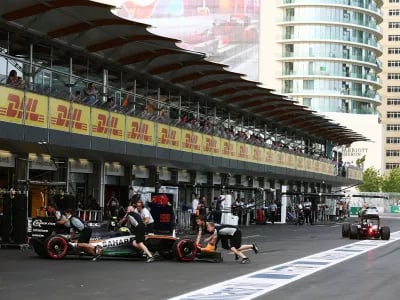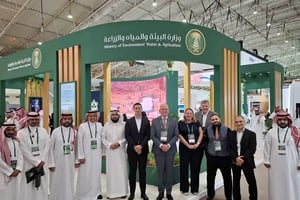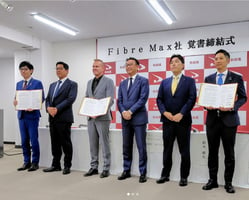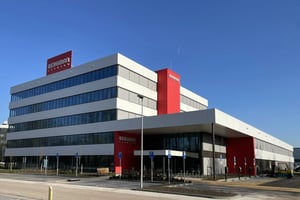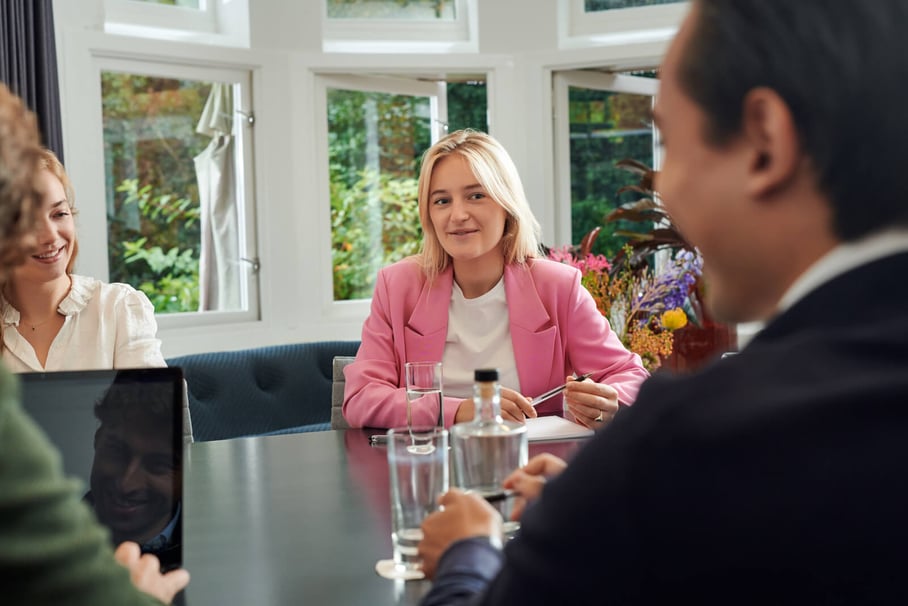The family-owned company De Boer Structures professionalised its operations, grew, and weathered the crisis alongside its shareholder NPM. The company recently found a new home following the acquisition by its German peer Losberger. CEO Arnout de Hair and Rutger Ruigrok, Managing Director at NPM Capital and in charge of the De Boer account, reflect back on their close 12-year alliance.
When former family-owned company De Boer Structures, which had firmly established itself as a supplier of tents, marquees and other temporary accommodations for events, was acquired by a significantly larger industry peer, the multinational Losberger, in June 2017, this put an end to the company’s nearly 100 years of independence.
When we ask the company’s CEO, Arnout de Hair, if he harbours mixed feelings about his company’s acquisition, he answers the question with a big smile on his face: ‘I can tell you there was a rock-solid logic to the transaction. The two companies complement each other very well, and together we can achieve economies of scale that will allow us to fully achieve our strategic objectives for De Boer’s future. Besides, the loss of independence needs to be put into perspective. While De Boer may be significantly smaller in terms of revenue and workforce, it’s stronger from an operational and financial viewpoint. The merged company has begun trading as ‘Losberger De Boer.’ It was also agreed with Losberger’s shareholder, Gilde Buy Out Partners, that Losberger’s CEO would be joining the Supervisory Board in 2018 and that I would be appointed CEO of Losberger De Boer.’
So where does that leave Rutger Ruigrok, NPM Capital’s Managing Director, who had guided and supported the company through the past 12 years, ever since NPM became the shareholder? ‘A lot has happened since 2005. De Boer Structures went through a rough patch, but worked hard, and very successfully, on its recovery. So I ended up building a close relationship with the company and its management. As a shareholder, you’re just so proud when a company bounces back after falling on hard times. But, as Arnout put it, the rationale behind the deal is strong. Gilde was the shareholder of the largest company, and NPM had no interest in holding a minority stake. As an investor, you then need to consider what works best from a business perspective, and in this case a sale seemed the best option. I personally am a bit sad that we are parting ways, but I firmly believe this is the best alternative for the company.’
Operating in seasonal cycles
At the height of the economic crisis, De Boer Structures was teetering on the brink of the abyss, but the company has been back on flying form for the past four years. So does that mean it is particularly vulnerable to economic cycles? De Hair: ‘It’s not just economic cycles – the seasonality of our business is actually reinforced by economic trends. Many more major events – including sporting events such as the Olympics and the FIFA World Cup and large trade fairs like the Farnborough Airshow in the UK – are held in even years than in odd years. They also tend to be concentrated in the second or third quarter of the year, when the weather in our hemisphere is likely to be milder. Any major economic downturn will cause those activities to be scaled back, including in even years and the busier quarters of the year.’
‘We had been on a rollercoaster ride ever since the second half of 2009. The even year 2010 wasn’t much better, and by the end of 2011 we implemented a 15-point plan for survival as a “leaner” and “meaner” organisation. After a surprisingly strong 2012 – thanks to the London Olympics and the UEFA European Championship in Poland and Ukraine – and a weak 2013, we wound up breaking even again in 2014. Last year was excellent and this year has been good as well, even without the occasional boost from the contracts for the provision of temporary accommodation for refugees in Germany and the Netherlands, from which we benefited back in 2016.’
During the lean years from 2009 to 2013, the banks pulled out and shareholder NPM Capital increased its capital commitment to De Boer Structures on two occasions. Ruigrok: ‘We were confident that the company was in good shape despite being cyclical in nature and vulnerable to economic trends. De Boer offers a superior product and is a leader in its industry. As an investment company with long-term equity capital to invest, we can afford to look beyond the lowest point. This eased some of the pressure the company felt due to bank loans and the strains and stresses that inevitably rear their head during tough times. It provides us, as investors, with tremendous satisfaction when a recovery scenario actually comes to fruition.’
Open communication and mutual trust
So what form does the collaboration between management and the shareholder’s representative actually take on? De Hair: ‘During those “rollercoaster” years, we maintained a close relationship with NPM and discussed all the main developments with them. NPM is concerned with the substance of things, takes an interest in the business, and is very involved in what we’re doing. That created a bond between our two companies. It’s also a matter of honesty, open communication and mutual trust. That’s something that has been there right from the start.’
Ruigrok: ‘We’ve always had a very good personal relationship understanding. We hold lunch meetings together to coordinate important business, and we even attended an Ajax-Feyenoord football match together once, as fans from opposite sides. But it’s not like we’re over at each other’s homes at the weekend. When it really comes down to it, we make decisions that are in the interest of the business.’
Why did De Boer Structures decide to pair up with Losberger now that it’s been riding high for some time? De Hair: ‘We’ve been familiar with Losberger since 1972. Their core business is the manufacture of temporary accommodations, which accounts for 80% of their revenue. We were their first international customer and have always remained a major client since. We really only compete with each other in the German market, where they also rent out equipment. We are clearly complementary: for De Boer, the merger involves backward integration in the supply chain, whereas for Losberger, it’s a forward-integration set-up. The merger has given Losberger its own major sales channel overnight, while De Boer can purchase within the organisation at lower prices and with a greater level of flexibility. The latter, especially – the ability to tailor your products and services to the customer’s needs – is a major advantage in this business.’
Creating value for synergies
Ruigrok: ‘De Boer Structures requires economies of scale in order to compete at the top of the events market. You can choose to do this gradually through a series of smaller acquisitions, or you can do it in one fell swoop, as was the case with Losberger, where you have the added benefit of far greater complementarity. Our two companies had been engaged in merger negotiations on and off since 2006, but these talks ended in a deadlock twice. After Gilde Buy Out Partners acquired Losberger in 2016 and De Boer was able to reverse its fortune, the pieces of the puzzle suddenly fell into place and we managed to strike a deal.’
So what’s next for the company? Arnout de Hair has got his work cut out for him for now. ‘The two rental organisations need to be integrated, systems and processes need to be standardised, and at Losberger there are still some operational kinks to be ironed out. We will need to deliver on the synergy between our companies.’
The future CEO of Losberger De Boer will be moving into this new venture with a brand-new shareholder. Is he daunted by the prospect of a new partner? ‘We went through an eventful transition back when the family sold the company to the British private equity firm 3i in the early 2000s. That was necessary in order to further professionalise, but it also represented something of a culture shock for the business. We have since become familiar with the procedures and mindset behind private equity. Personal relationships between managers on both sides always need to develop first, but the professional relationship already feels effortless.’
Rutger Ruigrok, who will now be turning his focus to other NPM portfolio companies and new investment opportunities, says he has learned from his experience with De Boer Structures. ‘I am even more firmly convinced than before that you need to continue supporting a company if you genuinely believe in it, particularly during hard times. I also think it’s important to be alert to the leadership potential of people from within the company’s ranks. Arnout really knows the business like no other and is respected as a leader by all employees, ranging from the people who set up the tents to members of senior management. His commitment and the authority he commands as a result have really contributed to our company’s recovery and expansion.’
- Read more about our former investments
